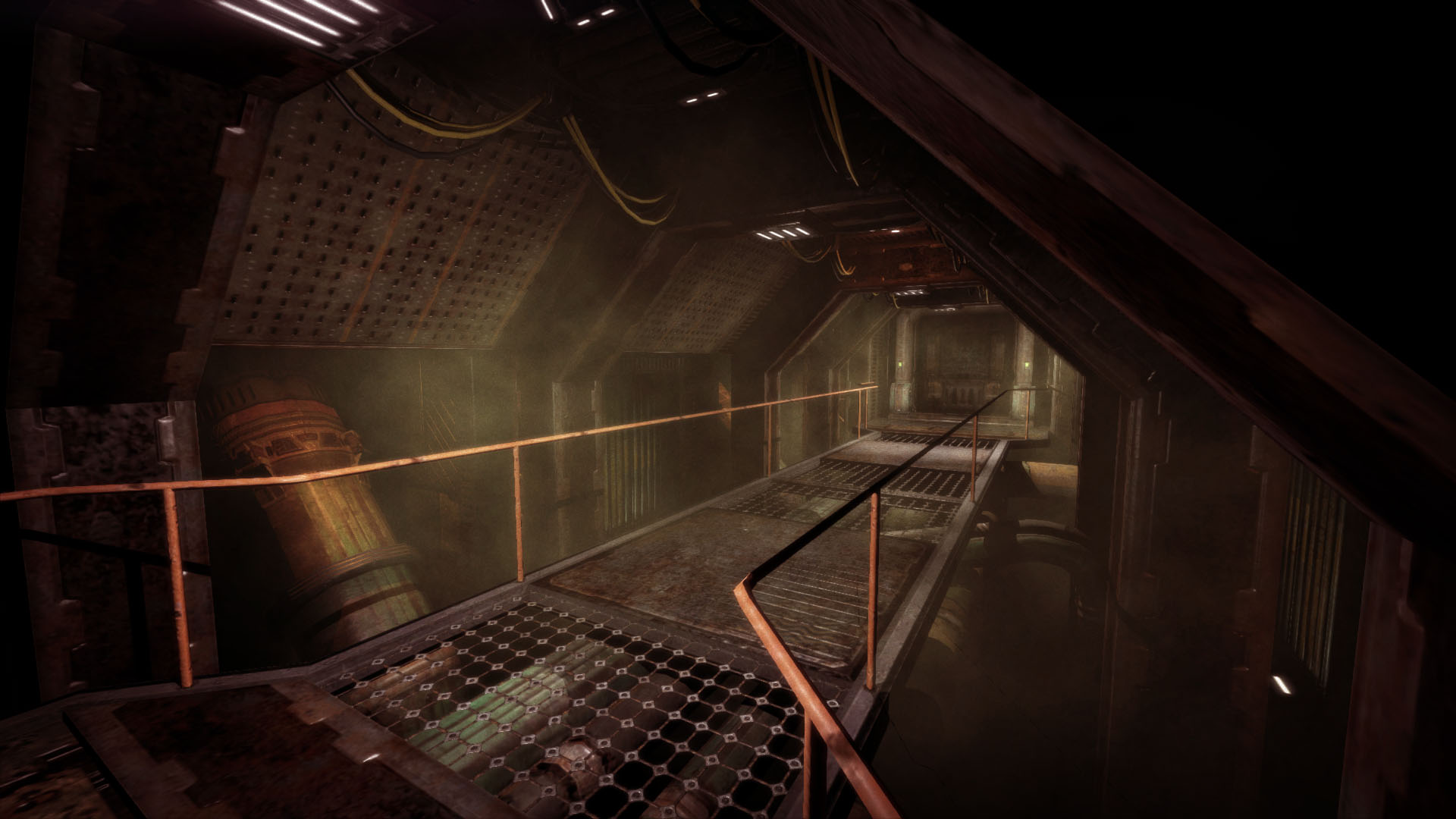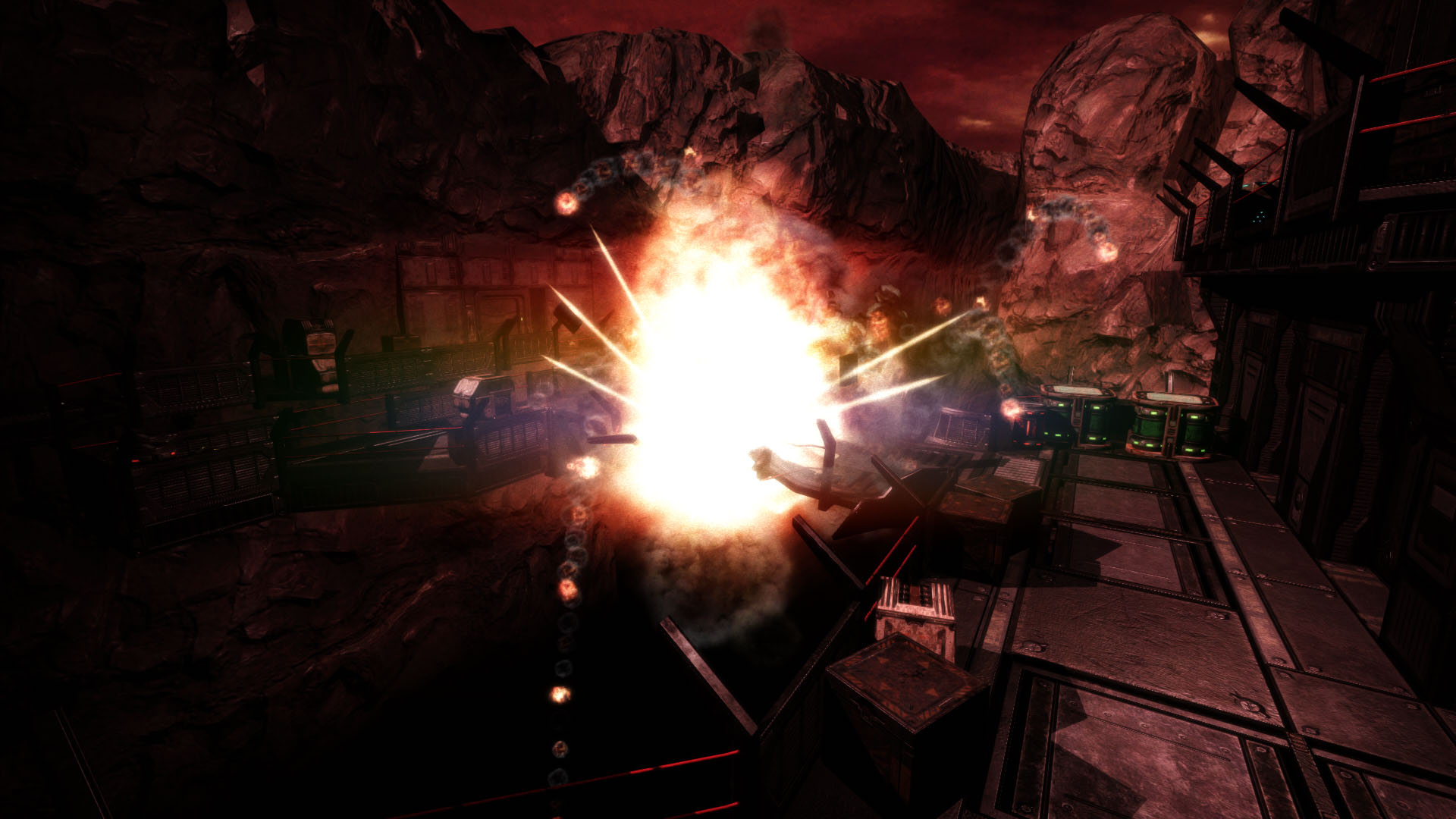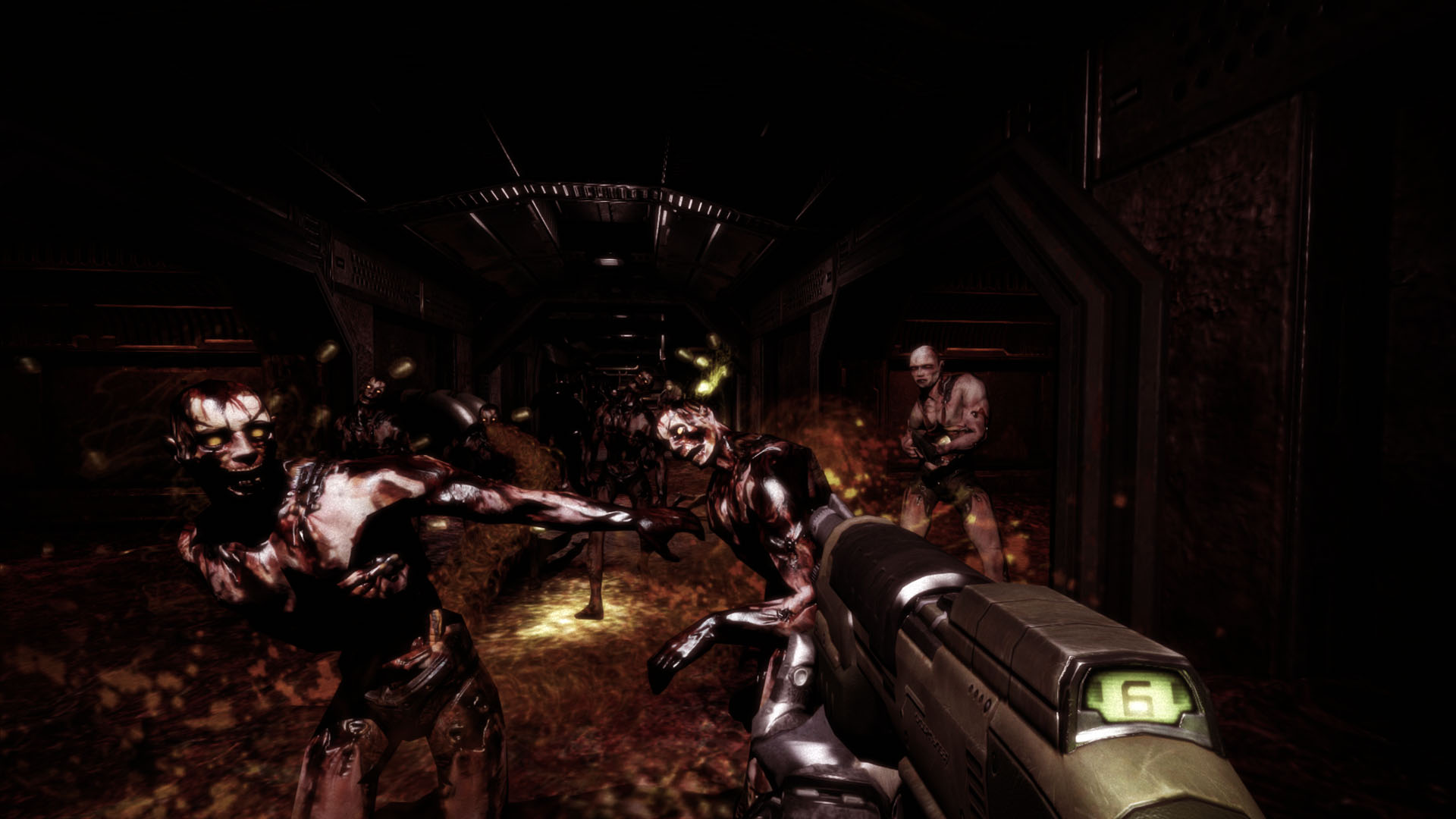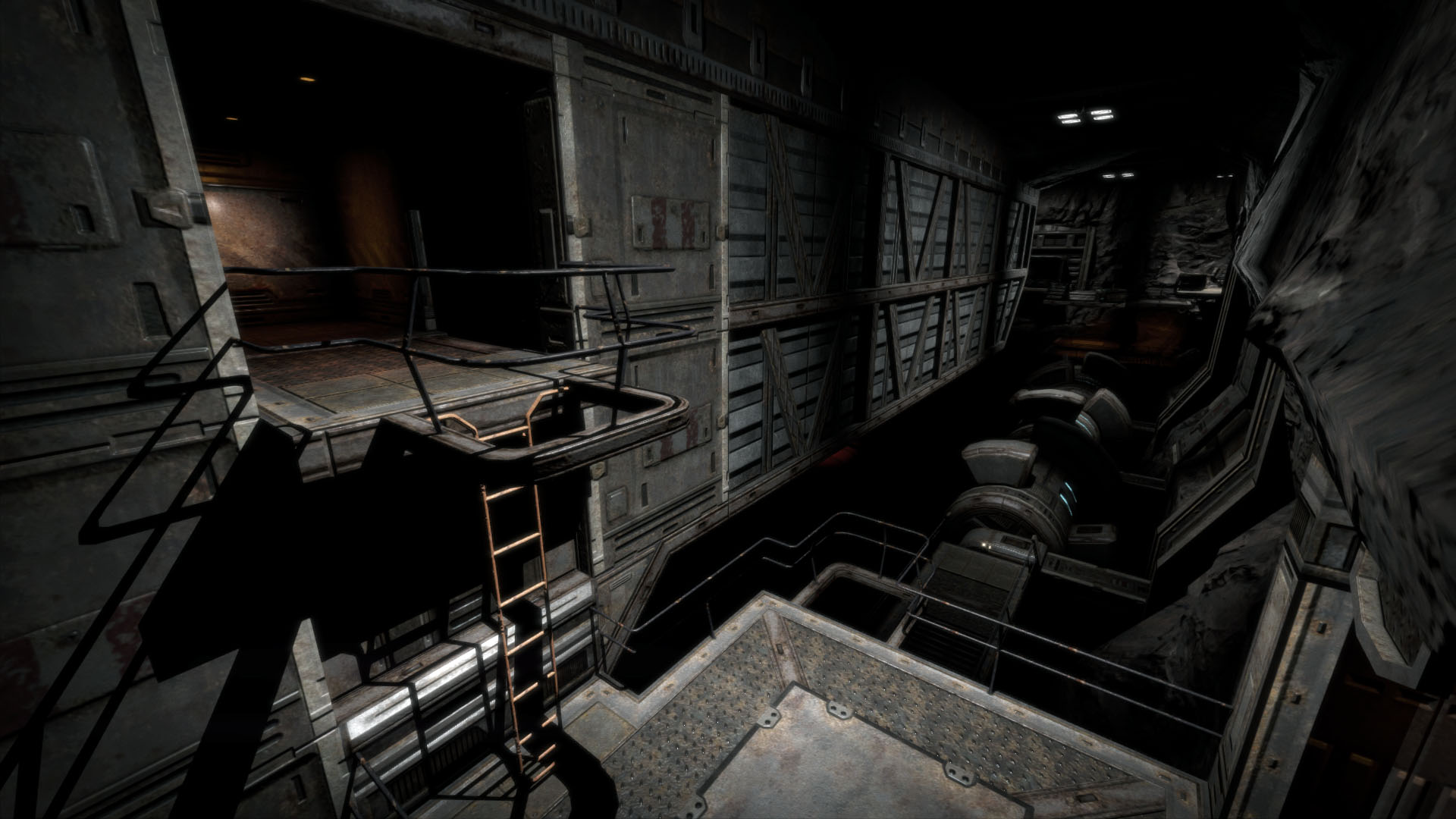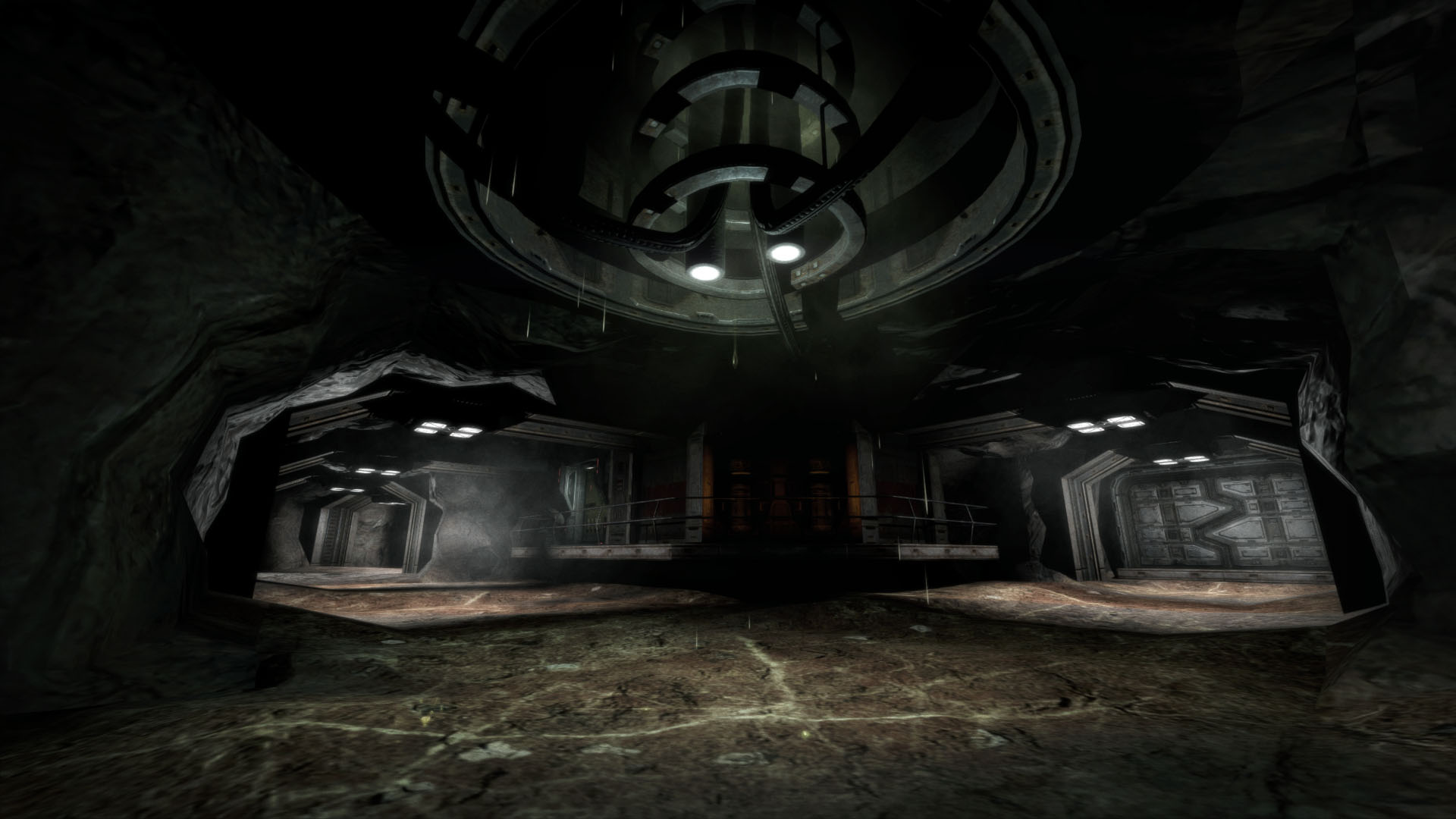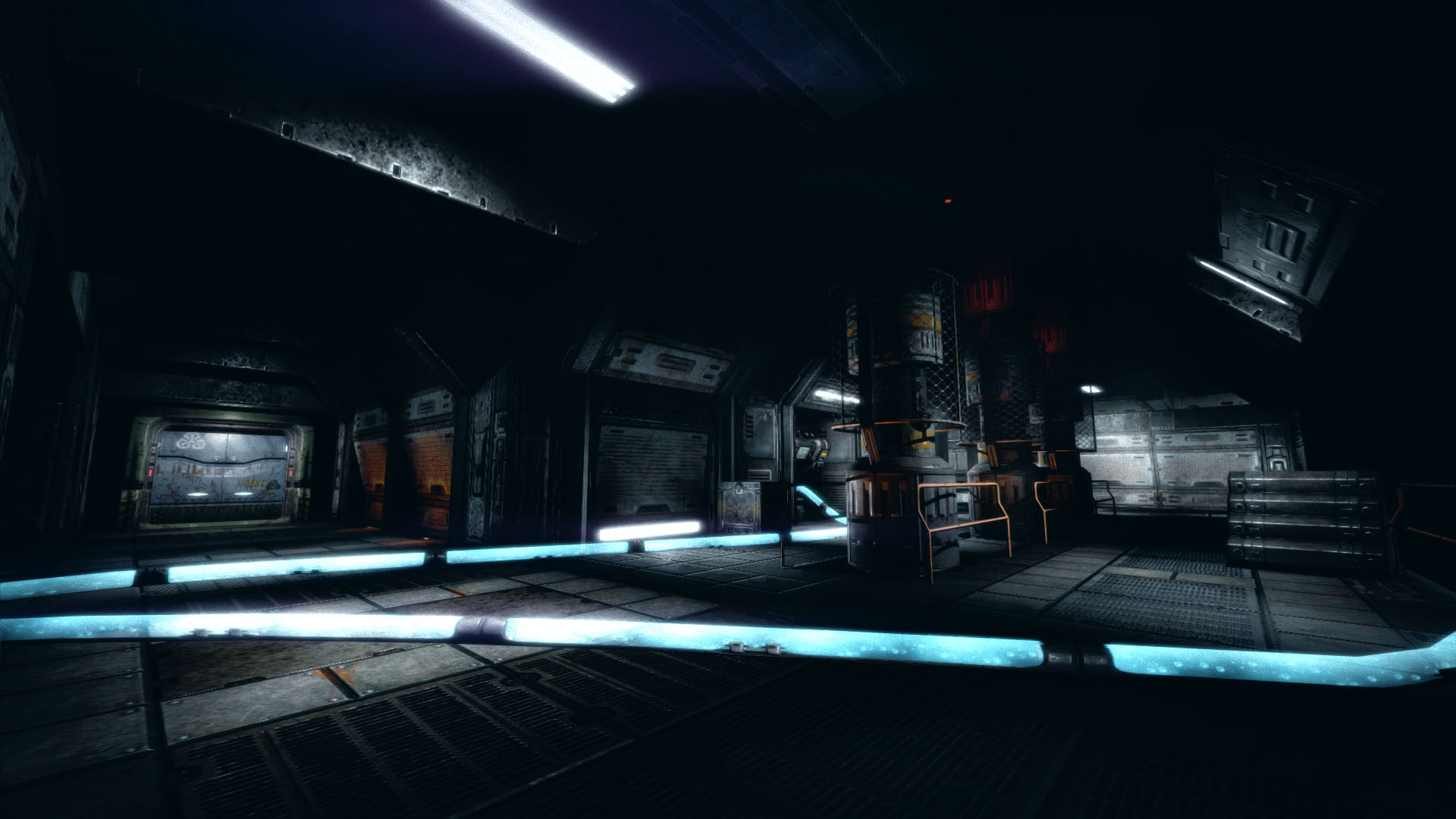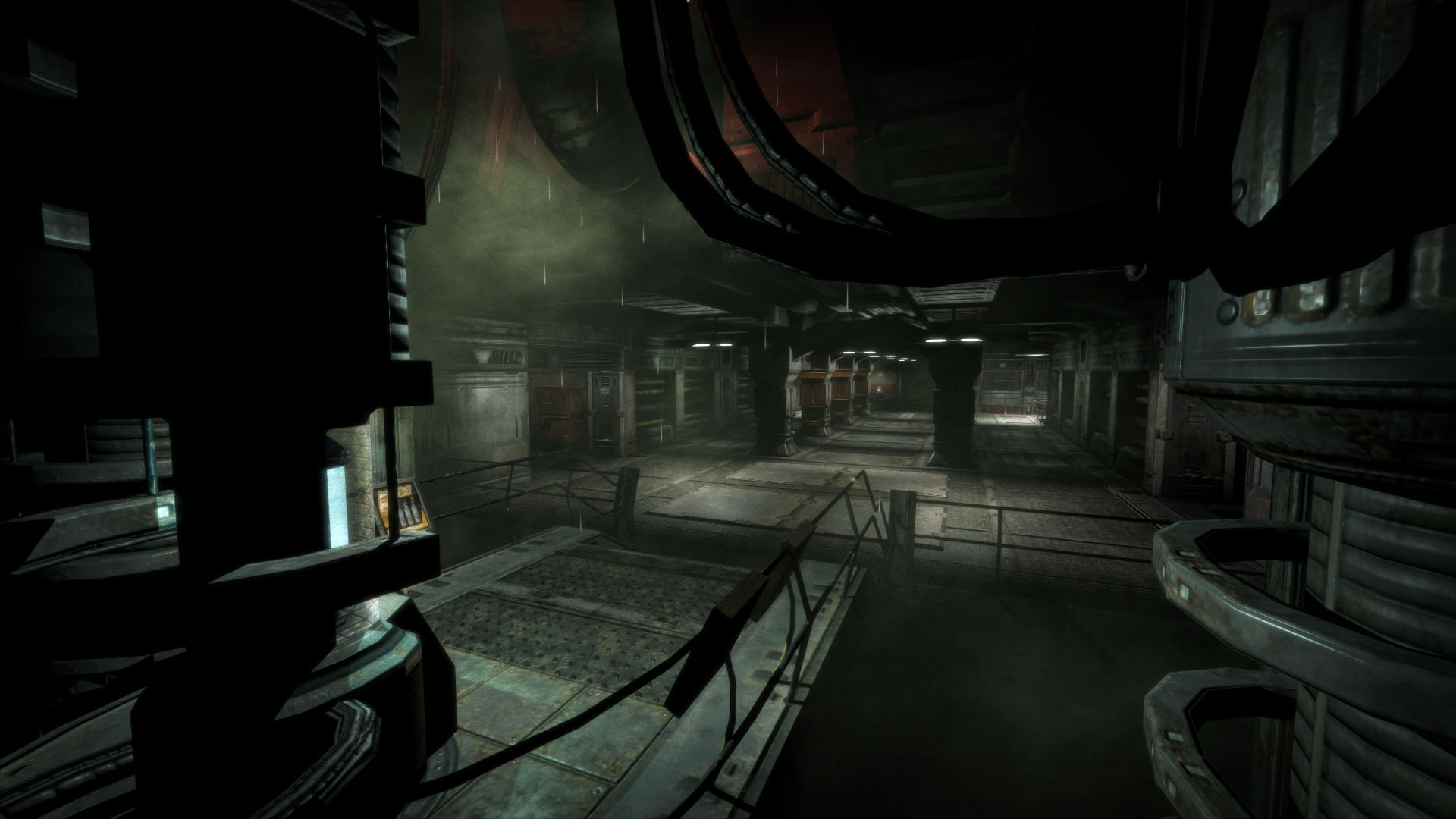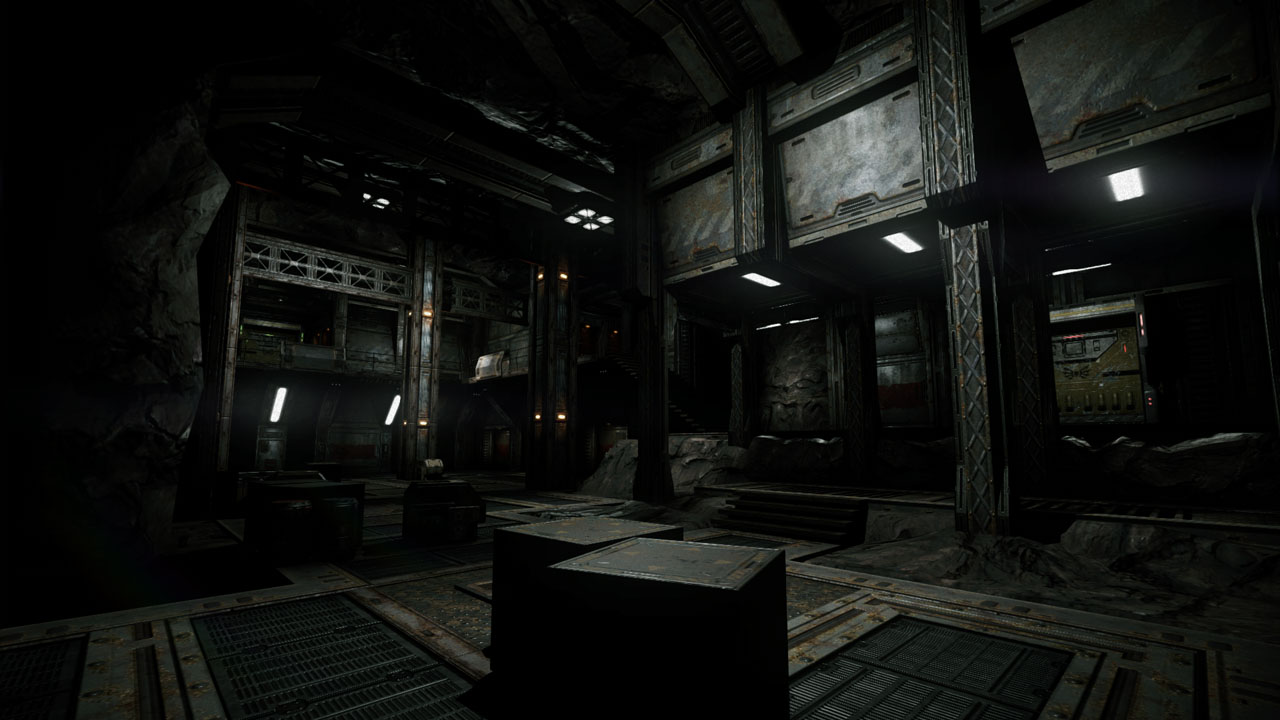
False Dawn was designed to serve as a portfolio centerpiece that would showcase not only my level design but my overall skill and understanding as a game developer. Given my career goal at the time was to develop AAA action games, it made sense to me that a good way to show my ability to do this would be to develop one myself.
My primary design goal for False Dawn was to utilize all of the skills I’ve learned professionally to develop a modern, story driven AAA shooter. To achieve this goal, I decided that despite the base game being released in 2005, my level needed to not only look like a contemporary game, but to play like one as well.
In order to implement my designs, I needed code support. This led me to Sikkpin, a supremely talented game programmer who I worked closely with to push this project to that next level. He was able to implement a suite of contemporary post processing effects into the aging Doom 3 engine, including: HDR/Bloom, Motion Blur, Bokeh Depth of Field, LUT Colour Grading, Soft Particles, Dynamic lens flares and more
Platform
PC
Released
July 2014
Project Duration
January 2010 – July 2014
Responsibilities
- Mission design & scripting
- Narrative Design
- Puzzle design & scripting
- Scripted event implementation including VFX, audio and animation implementation
- Layout design, blockout & optimization
Beyond these effects, Sikkpin was able to either implement my gameplay designs through code or create the tools that allowed me to do so through Radiant/script.
Quake4’s design is very much from a pre-Halo/Gears era of shooters. The technology driving it however is still incredibly robust. This allowed me the freedom to design and implement many modern gameplay mechanics. These additions included:
- A hybrid pickup/regenerating health system
- Per-pixel damage system
I combined these two major features into an interwoven system that helps better differentiate Quake4’s many weapons, while also adding an extra layer of strategy to the combat. These mechanics were also designed to gel with False Dawn’s narrative.
I wanted the design of the level itself to stand out from the tightly scripted, linear design of most modern shooters. Two games served as major inspirations for me growing up, so I decided to pull some design cues from both Super Metroid and The Legend of Zelda. This translated into three distinct zones that all needed to be completed before they could achieve their final goal. The kicker was that the player can complete these objectives in whichever order they want. The order taken would also change the how the remainder of the level would play out. This also allowed me to create a constant difficulty arc, despite the player being able to choose their path through the game.
The three zones housed a story specific objective in self-contained dungeons/mini-levels. Each of which had unique visual/gameplay themes and introduced new enemy/weapon types. Once an enemy type had been introduced, it could then appear in all subsequent areas.
The final part of creating a AAA level was to present the story appropriately. To do this I chose to create a fully voiced cast of characters to drive the narrative and seamlessly introduce the player to the new gameplay mechanics.

